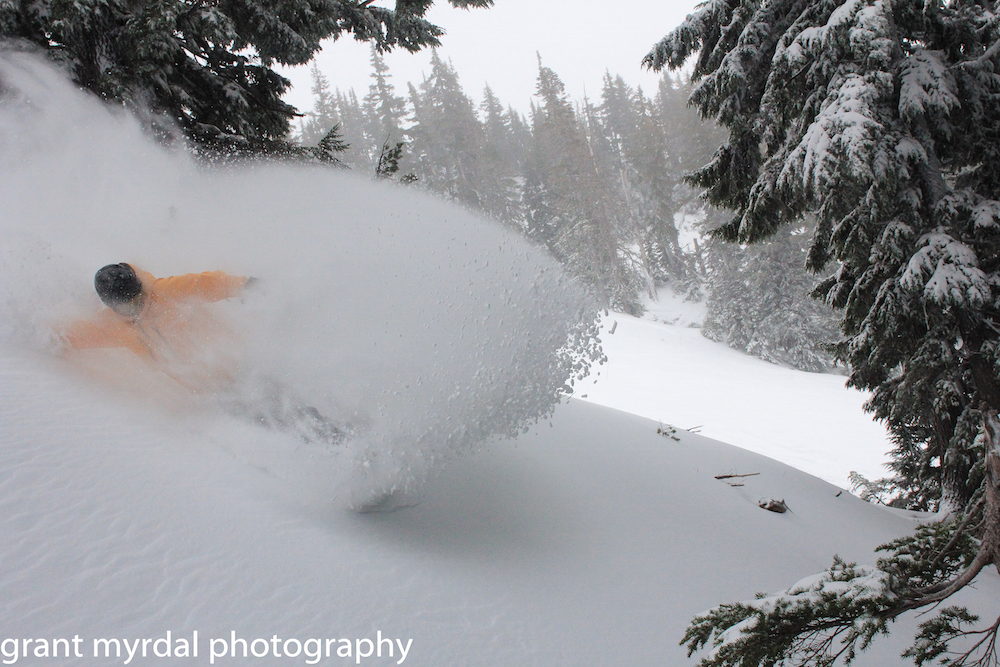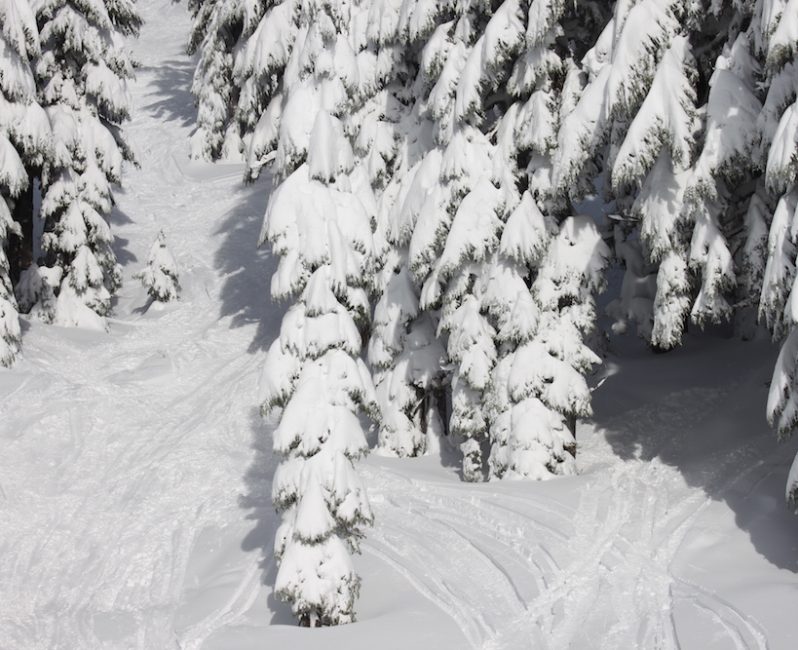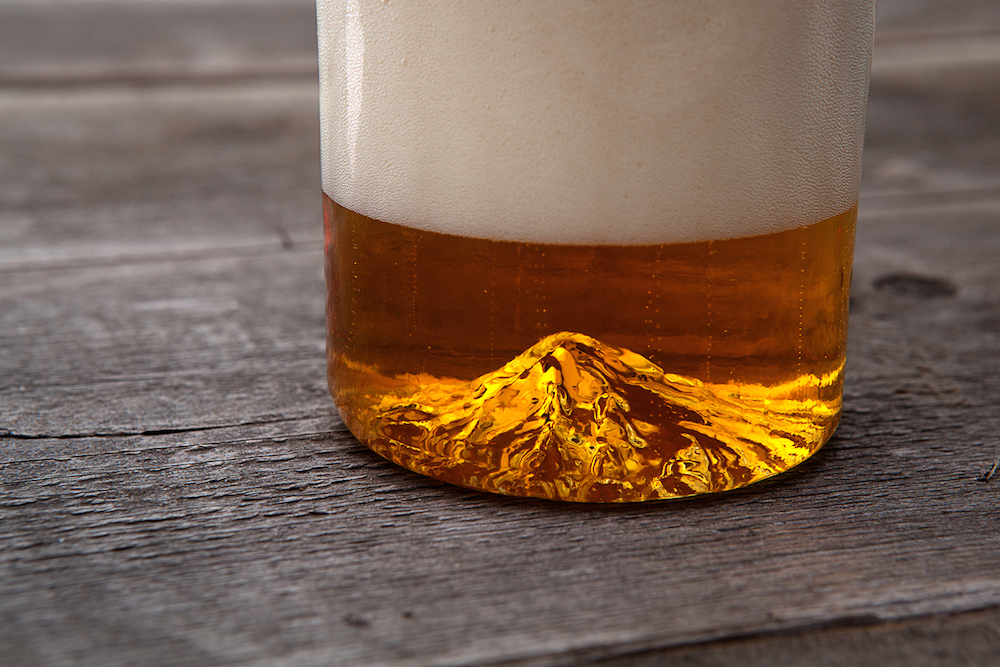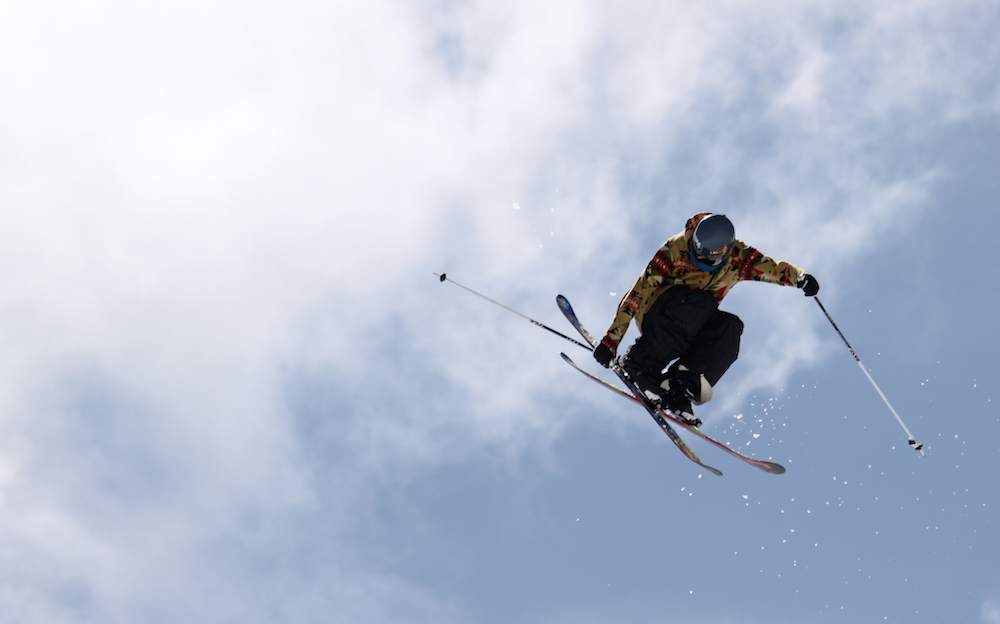Two tough snow years in a row on Mount Hood gave way to an epic pre-Christmas snowstorm last week, sending skiers and snowboarders racing up to enjoy the powder, with their wallets at the ready.
The resulting mess of bumper-to-bumper traffic, full parking lots, power outages and massive lift lines was borderline insane at times, but three feet of early-season snow couldn’t have come at a better time for the resorts, restaurants, hotels and shops that rely on snow rather than rain to bring in the customers. Restaurants and bars were packed, ski and rental shops were humming, and spirits were high from Govy General Store to the Mazot to Double Mountain.
And why not? The snow was perfect:
Timberline and Mt. Hood Meadows have gotten more than 100 inches each of snowfall already in 2015-16 (15 percent higher than average), and another big storm is rolling in this week, with the National Weather Service predicting another 15-30 inches of accumulation. Both resorts filled up quickly over the weekend as the snow-seeking crowds converged. Meadows got about 10,000 skier visits over three days, half of them coming on Sunday. By 4 pm Sunday the line of cars seemed to stretch a solid 60 miles downhill, from the Meadows parking lot to Metro Portland.
Skibowl is on target to open its Lower Bowl on Wednesday and its Upper Bowl on Thursday, with night riding open until 10 pm. It has been a while since all three major Mount Hood resorts were open for skiing and snowboarding, and the return of Skibowl should help spread the crowds somewhat.
As challenging as big crowds can be, they are exactly what the Mount Hood business community needs with the holidays approaching. Betsy LaBarge, President and CEO for Mt. Hood Vacation Rentals, says the fresh snow is making a big difference for her business. “The winter reservations were slow until it started snowing because 2 years of memory is hard to erase,” she explains. “But now it is looking good. I was up in Govy this AM, and the snow was really nice. It is so pretty, looks like winter. This is really good for the ski areas and the other businesses.”
Mount Hood resorts pulled in 1,342,405 visits from skiers, snowboarders and mountain bikers in the strong snow year of 2012-13, their highest total ever and nearly 150,000 more than the 10-year average. Since then the numbers have dropped amid June-uary inversions and predicted snowstorms that materialized in the form of rain.
The number of visits is the key indicator of the Mount Hood snow sports economy, and the best way to track its health. For example, 1,250,000 translates to about $200 million in annual direct spending when you calculate the following factors derived from an ECONorthwest study prepared for Ski Oregon in 2012 (all numbers rounded off for the sake of simplicity):
- A day visitor spends on average about $90 per day on tickets, gear, transportation, accessories, food and drinks.
- About 80% of Mount Hood visits are local day visits.
- A million day visits (80%) at $90 per day makes $90 million in direct spending from locals.
- A destination visitor spends about $300 per day on lodging, lift passes, gear, rentals, apparel and accessories and food and drinks.
- About 20 percent of Mount Hood visits are destination visitors.
- 250,000 destination visits (20%) at $300 per day makes $75 million.
- Add destination spending and day visit spending and you get $165 million.
- Add the estimated $35 million spent on equipment each year by Mount Hood snow sports enthusiasts, and you get $200 million.
$200 million in direct spending can add up to a lot of jobs in a good snow year. And while visit numbers are the key indicator to consider, the top factor affecting visit numbers is clearly snow. That explains why more skiers and snowboarders are organizing against climate change to protect the future of snow. According to research by the Rutgers University Global Snow Lab, average spring snowpack in the Northern Hemisphere has shrunk by a million square miles during the past 45 years. The agreement to reduce greenhouse gas emissions that was signed by more than 150 nations in Paris last week is good news indeed for mountain snow communities from Mount Hood to Mont Blanc to Cadrona.
Locally, snow is the natural resource that propels Mount Hood spending and supports Mount Hood jobs. The madness of last weekend serves as further evidence that people are more than willing to brave sketchy driving conditions, expensive pay-outs, logistical headaches and massive crowds — all for the experience of being immersed in an alpine ecosystem piled high with snow.

Rider: Jason Murray, Photo by Grant Myrdal
Last modified: December 15, 2015



